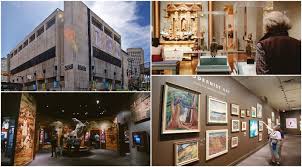In 1905, the year Alberta gained provincial status, a thirteen-year-old boy from Orillia, Ontario traveled west by train to visit his maternal uncles in Calgary. He fell in love with the wild west town, land, history, mountains, and people.
The son of Scottish immigrants, Eric Harvie was determined to make Calgary his home. He studied law at Toronto’s Osgoode Hall, but, before his degree was conferred in 1916, he was in France, a member of Alberta’s Light Horse Artillery. Injured in battle, he said he hid under dead bodies until stretcher bearers rescued him. He was returned to Canada to heal. Demobilized in 1918, he moved to Calgary to begin his professional law practice. In 1919 he married Dorothy Southam, granddaughter of publicist William Southam.
From the nineteen twenties through the forties, many men were searching western fields for mineral deposits and oil. Many lost their investments. Others gave up because they were unable to pay for the legal aid they required.
Eric Harvie said he had accepted chickens and eggs as payment from some of his impoverished clients. With others, he negotiated the purchase of mineral rights on their land in lieu of cash payment for legal service. His practice, which was in his Calgary home, flourished.
Finally, on February 13, 1947, the first major oil strike was celebrated at Leduc, thirty miles south of Edmonton and Eric Harvie became a millionaire.
When a second major strike occurred in 1948 at Redwater, near Edmonton, Mr. Harvie retired from law to devote himself to oil and philanthropy, focusing on western Canadian art, heritage, and culture, especially for native Canadian people.
He created and supported the Banff Centre of Creativity and Art and provided animals for the Calgary Zoo. In 1954 he built the Glenbow Museum, filling it with memories of Canadian explorers and western art.
Mr. Harvie also provided funds for Heritage Park and Devonian Gardens, all of which continue to be supported by his philanthropy.
I nursed Eric Harvie in 1963 in hospital, his city home, and 2200 acre ranch as he convalesced following a heart attack.
One day he was very excited, overjoyed and so proud as he relaxed close to a painting of the Queen. He had “charmed” her to part with her ONLY incomplete painting ever to leave Windsor Castle without the diagonal strip of fabric from shoulder to torso designating a specific regimental coat of arms, known as the Order of the Garter. The painting, close by his bed that day would go to the Glenbow museum.
I met the Harvie family at the ranch, including their daughter, Peggy who lived in Quebec.
After decades of generosity, Eric Harvie passed away in 1975. He was 82 years old.
Visiting the Glenbow Museum in 2014, I was shocked that no employee recognized the Harvie name. I was also unable to find any information about Eric Harvie in print.
——-
In the late seventies, nursing at Ottawa’s Civic Hospital, I awakened a post-op patient to check her vital signs, help her sit up, deep breathe and move her legs.
We chatted and she said she lived in Thurso, Quebec and had painted
with the famous late A Y Jackson who enjoyed painting in her backyard.
She smiled, saying that she had just learned that Mr. Jackson had left her a special painting in his will. It was his only unfinished painting.
Without mentioning any names, I related the story of the Queen’s unfinished painting.
My patient looked amused. Then, she said, ” I know. Eric Harvie is my dad.”
Joan Alexander

